This post may contain affiliate links. This just means I may receive a small commission at no extra cost to you for helping them promote their product or service. I don’t endorse any services I don’t personally use or recommend.
Peru took me by surprise. I had always envisioned Peru to be kind of a “basic” travel destination. Countless photos of flowy dresses perched at Machu Picchu, decorative llamas, and “iconic” shots we’ve all seen thousands of times–primed me to feel ambivalent about Peru. I thought I knew exactly what I would find. But I was happily mistaken. Peru can be tough for the budget-conscious traveler because there are just so many incredible excursions to undertake. Fortunately, I worked out the kinks in this Peru itinerary and can help guide you to the best parts of the country in this blog post.
Here’s what you need to know about Peru and all the incredible sights you must add to your 6-week Peru itinerary.
What You Need to Know About Peru
Peru has two seasons.
Wet (November-April) and Dry (May-October). If you plan on trekking, you’ll want to focus on dry season. I visited in November and managed a fair amount of hikes but you’ll also see quite a bit of rain.
That being said June-July is “high season” in Peru. If crowds are going to bother you- time your visit outside those months.
If you want to see the whole country…you’ll need at least 6 weeks.
There’s a reason this is a 6-week Peru itinerary. The country is huge and to see it all takes a significant amount of time. Don’t worry if you don’t have it. You just have to cut out some cities.
Speaking of getting around- Peru is the king of night buses.
Most routes are 8+ hours and conveniently buses from through the night to deliver you to your destination by morning. They are also extraordinarily comfortable for a bus. Most have personal TVs and super reclining chairs.
Be prepared, excursions are expensive.
And Peru has no shortage of them. Most are worth doing too.
Save money by booking on the spot.
Buses are on average about 10 soles per ticket cheaper if you book them at the station vs online. Obviously, this isn’t always convenient but good to know. The same goes for hostels. Walk-ups get a better deal (typically).
I typically book one night ahead of time on a site like booking.com (I found this to be the cheapest for Peru but Hostelworld had some deals too) and then ask the price in person to extend my time. Usually, I got a better deal.
Try to cook one meal per day.
This will save you tons of money. Street food isn’t as prevalent in Peru as in other South American countries. Buying groceries is cheap and hostels almost always are equipt with kitchens.
Your Complete Peru Itinerary (6-Weeks)
Here’s what the perfect Peru itinerary looks like for the average budget traveler.
Lima (2 Days)
Lima just doesn’t get alotta love from travelers. Maybe that’s because of the perpetually grey skies or the overly inflated prices on everything from accommodation to food. Or because most visitors never leave the tourist districts of Miraflores & Barranco. While both neighborhoods are pretty and worth a wander for the street art alone…they are also the most expensive in Lima.
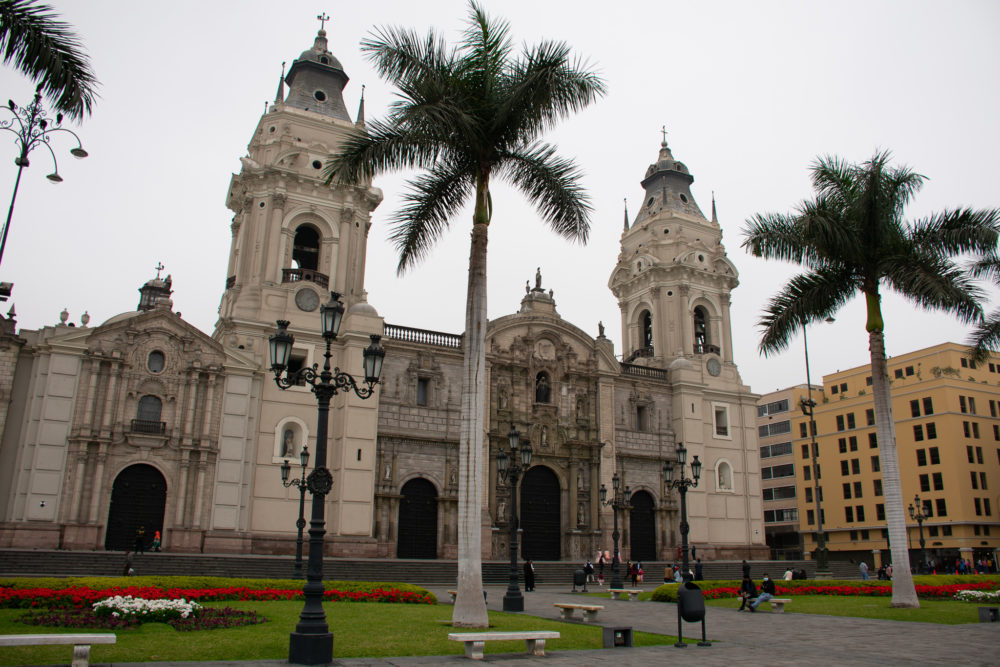
How to save money in Lima?
- Choose the Metro. Lima has a very well connected and easy to navigate public transport system that will allow you to explore the city with ease.
- Eat Street Food. & if you need a guiding hand, be sure to check out my entire guide to street eats in Lima.
- Don’t Stay Long. You really only need 2 days in Lima to get your bearings.
- Stick to free Attractions. Walk through the Park de Amore along the coastal cliffs of Lima. Visit the human settlements. Marvel at the grandiose architecture in the historical district. Pet the cats in Parque Kennedy.
- Try food at the local markets. I had ceviche, causa, and tons of tropical fruit smoothies here for real cheap.
Splurge on Culture: Lima is a museum city. There is the museum of gold, the erotic pottery museum, the museum of art, and of Incan culture. Pick one or two that interest you and pay them a visit. We choose the Larco Museo (pottery known for its erotic section + renowned as one of the best museums in SA) and the Catacombs of Lima (cheap + largest crypts in SA).
Where to Sleep in Lima
The Flying Dog Hostel (Miraflores)
This is a social hostel right in the thick of Miraflores. Dorm beds are around $5.50 a person.
The big benefit to Miraflores is that you’re surrounded by cheap local eats in addition to the touristy restaurants. Most of the cheap food is either chain fast food (but local) or street vendors but it does exist.
Casita Libertad Barranco (Barranco)
Another cheap hostel but a different neighborhood. Personally, we liked Barranco better than Miraflores.
But like I mentioned above, although all the best food is in Barranco (Central, anyone??) it can be pricy.
Where to Eat in Lima
- Siete Sopas. Great soup and massive portions for low prices. (Miraflores-ish)
- Al Toke Pez. Get the combination. This was the best damn ceviche and calamari we’ve ever had. You get huge portions of seafood fried rice, calamari, and ceviche with a bottle of chica morada for 25 soles. A steal. Also this was on the Netflix show- Street Food Latin America.
- Burrito Bar. Quite possibly the best Mexican food we’ve had in South America. Portions are huge and I HIGHLY recommend the carne. 2 tacos for 16 soles is enough for a decent meal. (Barranco)
- El Chinito. The best chicharon sandwich in Peru. (Everywhere- Historic District)
- Manolo Churros. A local chain that specializes in churros dunked in rich hot cocoa. (Miraflores)

Cruz del Sur (tourist bus) costs $13 per person. For this short ride try a local bus instead.
Paracas National Reserve (2 Days)
Paracas is a teeny little beach town. Just a handful of restaurants flung across a sandy boardwalk. But the town is not the allure here. It’s the massive national reserve right next door. Known for its flamingo sightings and stunning red sand beaches this desert landscape is unique to Peru.
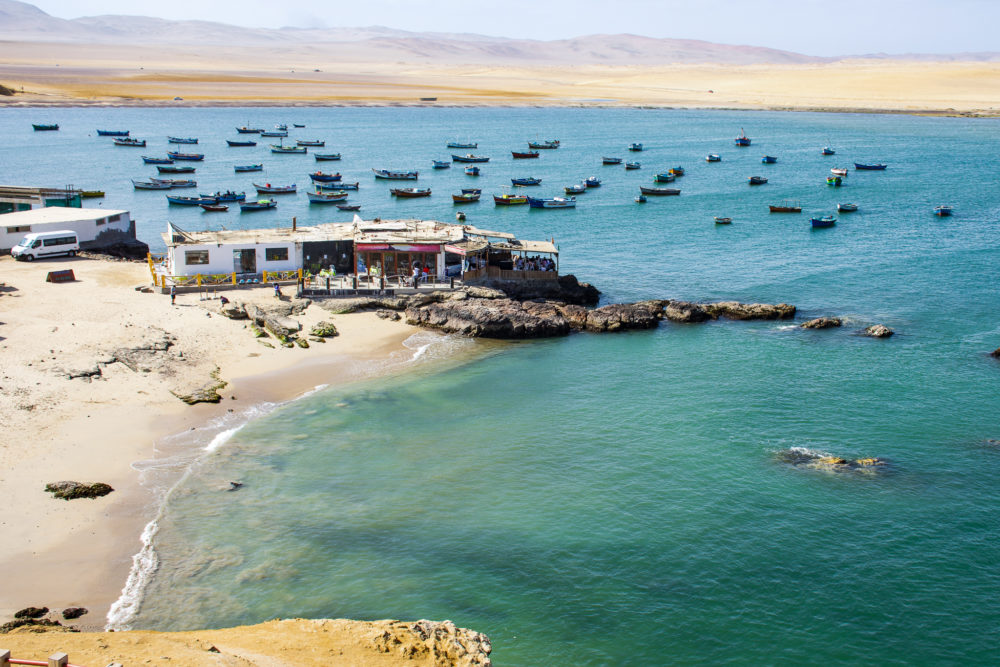
I recommend staying at Atenas Backpacker Hospetage. Not only is it a family-run guesthouse but it’s easy walking distance from the bus station and center of town.
Skip the day tours of Paracas National Reserve. Instead, rent a bicycle from one of the many shops in town (30 soles for the day) and bike the 40km yourself. Just be sure to check the temps before you visit. Paracas is a portion of the Atacama desert and can be extraordinarily hot in the summer.
Flamingo Tip: The best (and only) place your guaranteed to find flamingos is just past the Hilton hotel. This is a great stop #1 on your full-day biking adventure.
My favorite Stops in Paracas National Reserve
- La Catedral
- Yumaque Mirador
- Playa Roja
- Playa Las Minas
- Lagunillas (Plan on eating lunch here)
Don’t forget to pay a visit to the Poor Man’s Galapagos– Isla Ballestas.
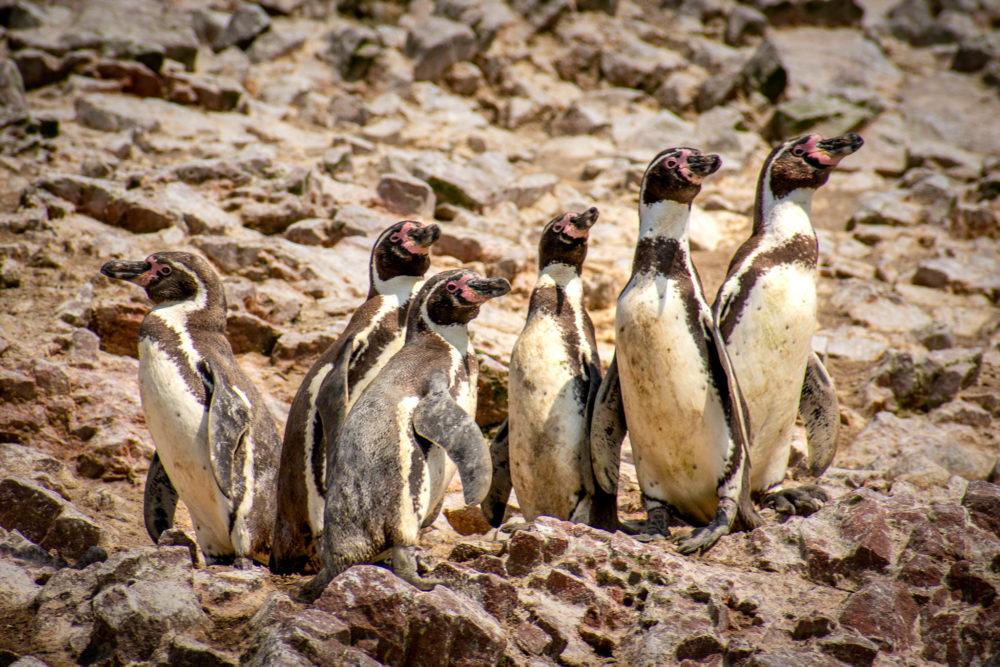
It’s really nothing like the Galapagos but you’ll have the opportunity to see tons of bird species like boobies, pelicans, penguins, and some lazy sea lions. Tours run early in the morning and cost around $12 a person. If you take the morning tour you can finish before the Cruz Del Sur bus to Ica departs.

Another quick Cruz Del Sur or local bus will get you from Paracas to Ica. Once in Ica, it’s a 10-minute tuk-tuk ride to the sand dune oasis of Huacachina. Total: $7
Huacachina/Ica (1 Night)
The magical Peruvian Oasis. Huacachina is a lush green little village surrounded by impossibly tall sand dunes. You’ll think you accidentally just landed in Namibia. Some travelers sandboard or take a dune buggy tour to get up close with the dunes but if you’re on a budget you can (and should) hike to the tallest dune. It’s a brutal hike (sand is hard to hike in) but the views at sunset are unrivaled in Peru.
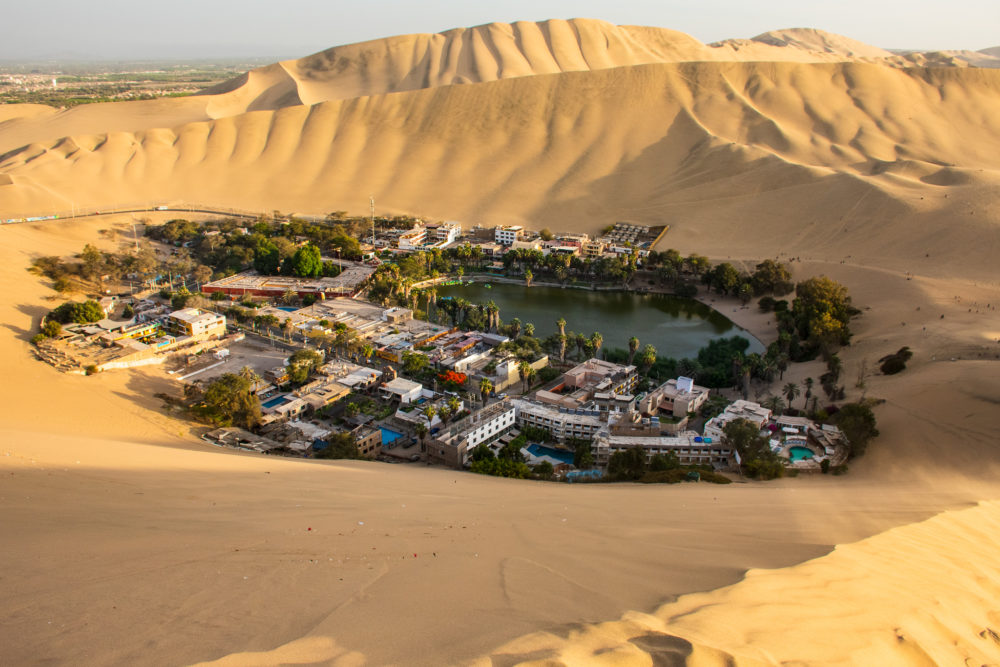
Stay & Eat at Wild Olive Guesthouse. It’s pretty much the go-to for dinner time and the rooms are perfect for couples. Solo travelers might opt to grab a cheap dorm bed at one of the two hostels in the Oasis if available.
Hot Tip: Try to stay in Huacachina and not in Ica. Ica is a bustling city with few tourist attractions worth noting. The best time to hang out on the dunes is sunrise and sunset and you’ll prefer to not track down a taxi at those times of day.

Return to the Ica bus station for a 6-hour ride to Nazca on those comfy Cruz Del Sur buses.
Nazca (1 Night)
Nazca is another quick stop along Peru’s coast. If you’re on a very tight budget and can’t afford to splurge on a fly-over plan tour of the famous and inexplicable Nazca Lines – just give Nazca a pass. There are a handful of “viewing” platforms that you *could* conceivably stop at in lieu of the flight tour BUT you really can’t see anything and it’s a waste of your valuable time in Peru.
Cost of the Flyover Tour– $65 Per Person.
The Nazca Lines are really quite interesting and the flight is an adventure in itself. If you’ve never been in a 6-seat plane….it’s a bumpy ride. If you’re prone to motion sickness- this is probably not the attraction for you.
Casa blanca Hostel is cheap and super comfy. Much more of a guesthouse vibe than a hostel, however. Mama’s has the best breakfast in town (try the Karab Coffee) and Mamashana has the best Organic Peruvian dishes in town. We ate pretty much every meal here.

From Nazca, you’ll continue down the Cruz Del Sur line to Arequipa. This will be a long stretch.
Arequipa (2-6 days depending on if you hike)
The White City. This is the most European-influenced city in Peru. The streets are clean, lots of the architecture is colonial, the town square is very pretty, the coffee culture is worth writing home about, and it’s a great place to meet fellow travelers. Living in the shadow of two massive volcanos- Arequipa is a much bigger city than you might think. But travelers typically stick to the pretty historical center.
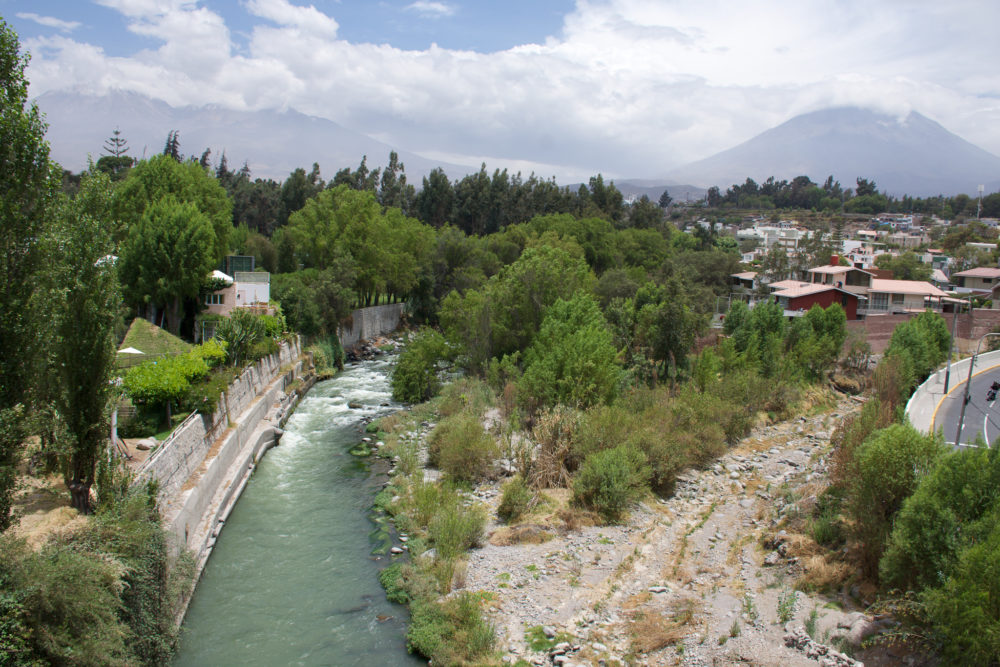
There’s also A LOT of hiking to be done in this area. I’ll discuss the routes worth doing in more detail on my “Hikes Worth Doing in Peru” blog post.
Where to Stay in Arequipa
Arequipay Backpacker’s Downtown. There’s no competition. For backpackers on a budget, this is the best hostel in Arequipa. You get a free breakfast, access to a nice kitchen, a workout space, lots of outdoor areas, and a pretty rooftop to enjoy.
Where to Eat in Arequipa
- San Camilo Market. AMAZING food selection. You can have a massive meal complete with stuffed peppers, scalloped potatoes, papas rellenas, and a salpena all for under 15 soles.
- Prana Vegan Food.
- Caffetteria Gourmet Italiano. 50 soles for Brushetta, 2 glasses of red wine, and a HUGE excellent pizza. Finding exceptional pizza in South America is a struggle. & sometimes that’s really what you need.
- Eco Brunch. Not the most budget friendly but these pancakes brought me to life.
- Queso Helado Ice Cream Stand. It’s not really cheese ice cream. It’s cinnamon and fresh vanilla. One of the best snacks in Arequipa.
- Hit the Mcdonald’s for passionfruit ice cream on the cheap. This is truly blashpenous to write BUT it’s super cheap and you can’t get passionfruit like this back home.
- Sunset Rooftop Bar. Very reasonably priced food and cheap drinks. A good find in Arequipa.
Things to Do in Arequipa
- Visit Mundo Alpaca. A 100% free way to get up close to some Vicuna, Llamas, and Alpaca.
- See Juanita. $6 per person is a little steep but it was increbily interesting to see the frozen mummified body of the Incan teenager who was once a human sacrifice. My favorite museum in Peru. She’s at Museo Santuarios Andinos.
- Hike the Colca Canyon. Or don’t. I have a whole blog post about it.
- Hike Volcano de Misti. This is an intense trek for only intrepid travelers. Even then…you have to have a guide. Check out my post on the best hikes in Peru for more information.
- Check out the view at Yanahuara Scenic Overlook. The view is really only ok but it gives you a chance to have a scenic walk through town.
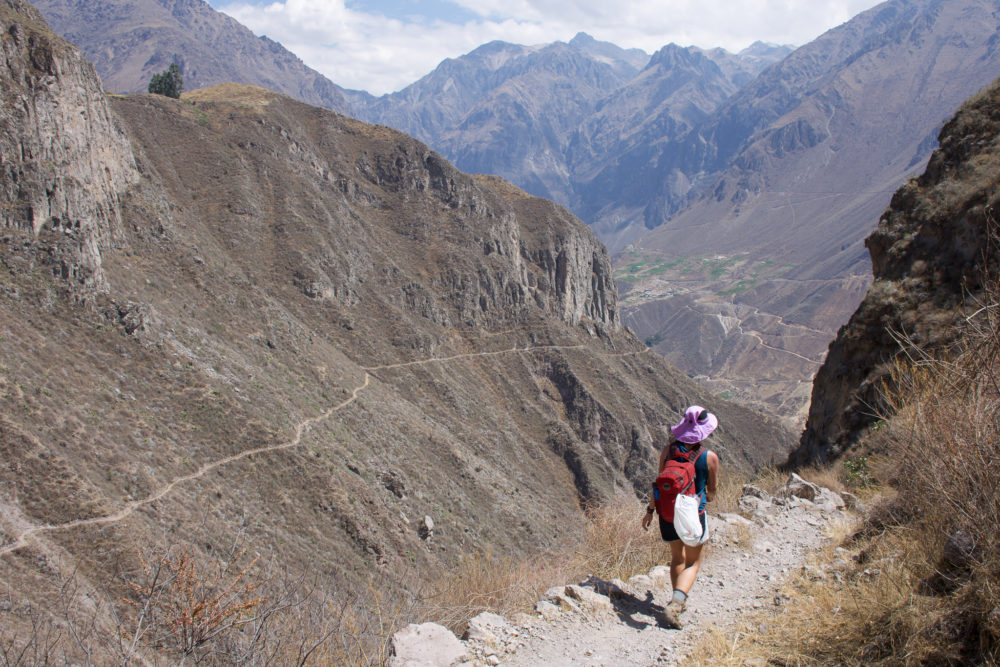
What About Puno??
You’ll notice that our Peru itinerary skips Puno and therefore Lake Titicaca entirely. We’ve heard mixed reviews about the town. The only way to experience the lake on a budget is to take a popular tour of the Eros islands. The islands and crowded and most of the experiences feel a little as though the locals are performing for your benefit.
If you’ve decided to skip hiking in the Arequipa area and now have some extra time, feel free to add Puno into your itinerary now. OR if you are planning to enter Bolivia over the land border– you can always add a quick visit to Puno then. We skipped the town altogether and didn’t regret our decision.

If you choose to skip Puno as we did, you’ll have two options for getting to Cusco. Fly from Arequipa Airport for 160 soles or take another overnight bus with Cruz Del Sur for 80 soles. I recommend the bus because flying into 11,000 feet (Cusco elevation) makes it much harder to acclimate.
Alternate Route: If you’re contemplating flying to cut down on the sheer amount of overnight buses you can fly from Arequipa to Puerto Maldonado and explore the Amazonas region before Cusco. This way you’ll just have to bus from Puerto Maldonado to Cusco.
Cusco (2 Weeks)
My favorite Peruvian city. The streets are stacked precariously along the basin of the mountains and the entire place is absolutely riddled with cobblestone. Cobblestone stairs, streets, buildings, and loads of red terra cotta rooftops. There are tons of town squares to hang out in and surrounding the main Plaza de Armas it’s practically a right of passage to enjoy a cup of coffee from one of the many cafe balconies while enjoying views of the impressively crafted churches.

This is a destination on every travelers Peru itinerary.
Where to Stay in Cusco
The budget option– Oki Doki Hostel is just fine. It’s cheap, comfortable, and has a very bare-bones breakfast for free in the morning.
The best option– La Bo’m. We loved this hostel. It has a very bohemian vibe and although it’s a little more expensive (cheaper when you book in person but be careful because it fills up) it comes with an all-you-can-eat crepe breakfast & unlimited tea/coffee all day long. It’s also got killer Wifi, hammocks in the outdoor spaces, and plenty of indoor areas by a cozy fireplace. It’s also in the San Blas neighborhood which is nice and central.
Where to Eat in Cusco
I’ll just preface this by saying because Cusco is the most popular city in Peru for tourists…things are a little more expensive here. Some of the restaurants aren’t budget-friendly but we found them worth a splurge.
- San Pedro Market. This market is one of the most interesting sights in Cusco. It also has lots of fruit juice and food for a steal. It wasn’t my fave meals but it will do.
- Todos Chicken. A massive portion of roasted chicken, fries, and a salad for 25 soles.
- Jack’s Cafe. This is the expat breakfast stop. Try the Alpaca Sandwich.
- Green Falafal. I’m no vegan but this was delicious and SUPER cheap for the huge portions. Two people can easily share for lunch.
- Chakruna Native Burger. Great burgers & fries. Super kind owners.
- WACHAFOS Peruvian Street Food. Favorite lunch spot in Cusco. Also portions are huge and they give you a free welcome drink. The upstairs overlooks the main plaza.
- The View House. Great city views and more known for it’s HH drinks than it’s food…but the Salchipapas made a great drunk snack for two.
- Garwhal. Best Indian Food in Cusco. Maybe in all of Peru.
- Green Point. I have to mention this place because the outdoor patio is great, the food is tasty (although vegan) and they do fun events like Salsa dancing and live music in the evenings. They also have a huge selection of craft beer they brew themselves. But it’s pretty pricey to be honest.
- La Bo’m (La Boheme). The Maracuya Pisco Sours & savory crepes upstairs are worth getting once. & guests get 20% off the crepes.
- Morena. For when you want to SPLURGE. In all honestly, it’s not that much more than Green Point and the food here is top tier. You must try the Chicha Morada Pisco Sour. It was my favorite cocktail in Peru.
What to do in Cusco
- Acclimatize for your upcoming treks. Cusco is right smack in the middle of some of Peru’s best hikes. Get used to the altitude here.
- Visit the ruins of Saqsaywaman. Save yourself money on the tour and walk it yourself. Well from the top that is. Taxi to Tambomachay and then walk down through Puka Pukara, Templo de la Luna, Kusilluchayoc, Saqsaywaman, and back to town. The tourist ticket to visit all the temples costs $17 per person.
- Take photos with the Llama women. They are everywhere. 5 soles per person is standard.
- Shop for “Alpaca” Sweaters. The cheap ones (40 soles = $10) aren’t real alpaca but it’s still a good souvineer.
- Wander the city. The best neighborhoods are the historic center & San Blas. There’s even a famous painting of the last supper in a church at the main square where they are eating Guinea Pig.
- Hit the local market. Fruit, veggies, and plenty of photo ops just around the corner from the San Pedro market.
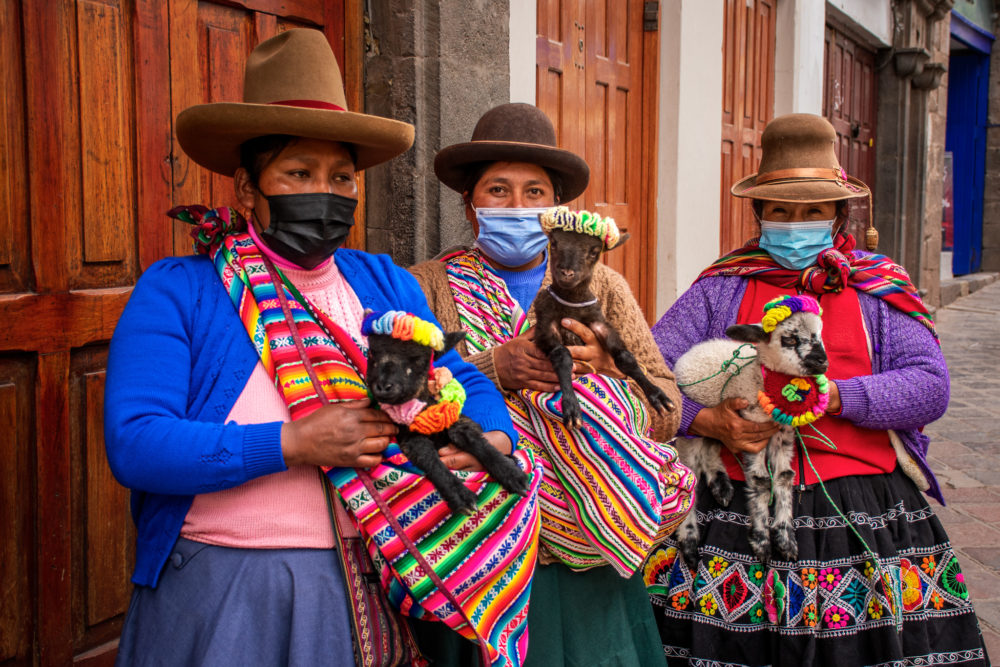
Day Trips From Cusco: There are many. The Inca Trail, for example, was without a doubt our highlight of Peru. You also must hike “Rainbow Mountain” + Red Valley (actually called Vinicunca), and if you have the time add a trip to Humantay Lake, Ausangate, or Salkantay. Check out my guide to the best hikes in Peru for more info.
Do not however get sucked into the “day trips” to the Sacred Valley. You won’t get to see nearly enough and they are absurdly expensive. Instead, visit independently and plan to spend 2-3 days in the valley itself. Here’s my guide on how to do exactly that.

From Cusco, you’ll want to hop into a collectivo at the station and head to Pisac or Ollantaytambo. It does not matter which Sacred Valley city you visit first. Collectivos leave when full and cost about 6 soles.
Ollantaytambo (1 Night)
The most beautiful city in the Sacred Valley and a jumping-off point for those not brave enough to hike to Machu Picchu. Ollantaytambo doesn’t need too long to see thoroughly.
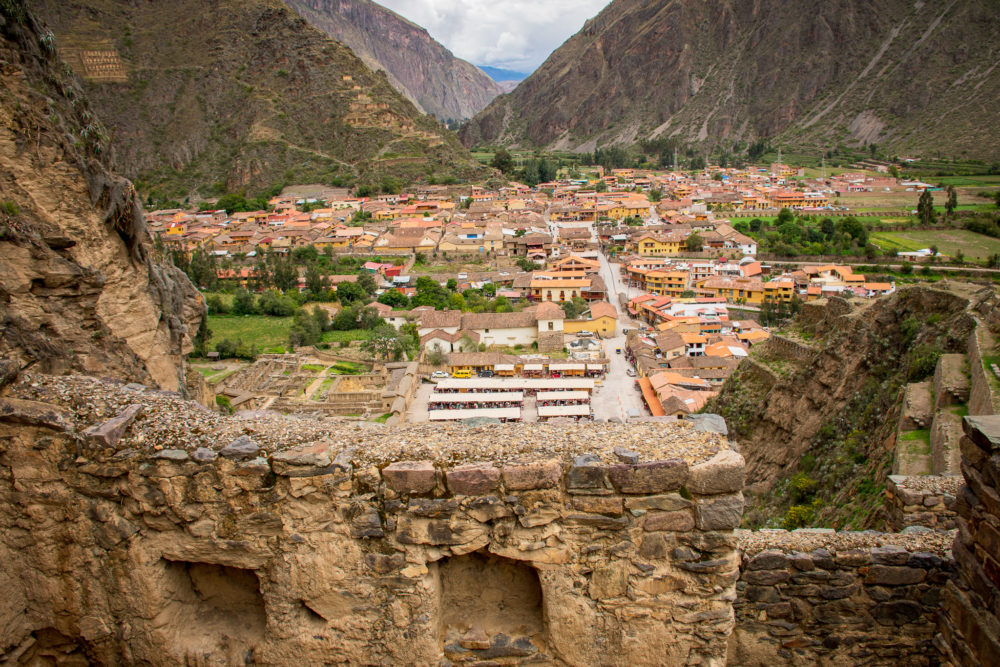

Just outside the main square, you’ll find the same collectivo vans. For 5 soles they will deliver you to Pisac.
Pisac (1 Night)
This is my personal favorite town in the Sacred Valley. Unlike Ollantaytambo, it doesn’t feel as affected by tourism. And it has a very large population of dusty dreadlocked backpackers giving the town a very hippy vibe. Here’s my full post on the Sacred Valley & where to sleep and eat in Pisac.
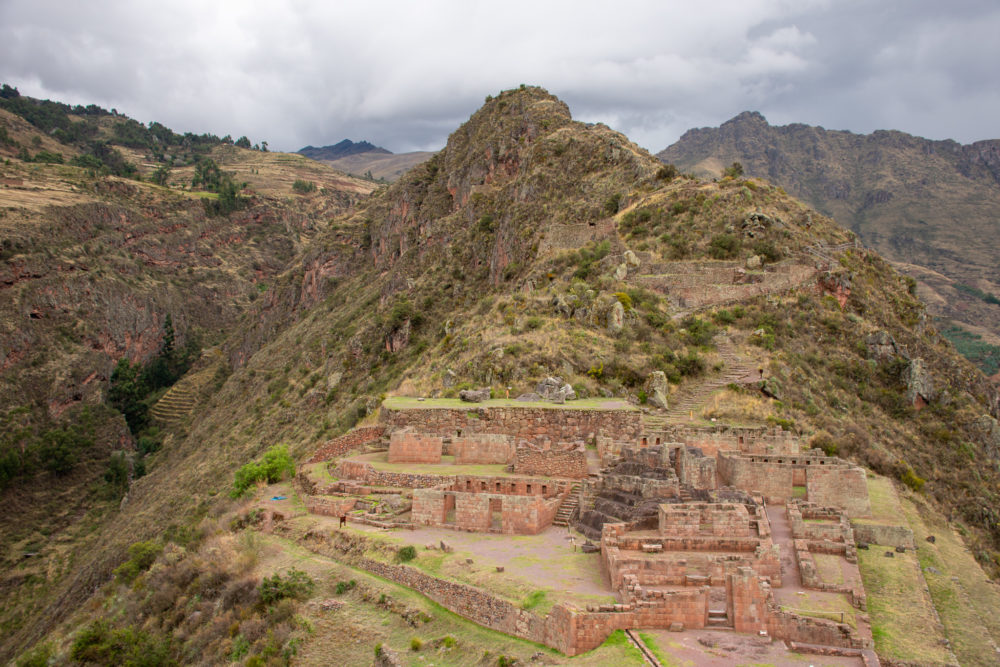
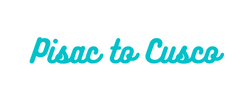
Now you’ll want to grab a collectivo (from where you were dropped off) back to Cusco. It should cost about 6 soles.
Once back in Cusco: You’ll have a few choices to make- if you haven’t yet visited the Amazon now is the time too. You can either fly for around 300 soles round-trip or take a very rough 12-hour bus that crests 15,000 feet for 90 soles one way. If you don’t want to visit the Amazon OR already have, head straight to Ayacucho or Lima. If you choose to head straight for Lima I highly recommend springing for the flight. The bus from Cusco to Lima is brutally long and on terrible roads.
Puerto Maldonado (6 Days)
The Peruvian Amazon. This is the city (and yes, this is a city) you come to see colorful macaws feasting on clay, watch Howler monkeys play overhead, possibly jaguars slinking in the jungle, and sleep surrounded by thick rainforest at an Amazon jungle lodge.
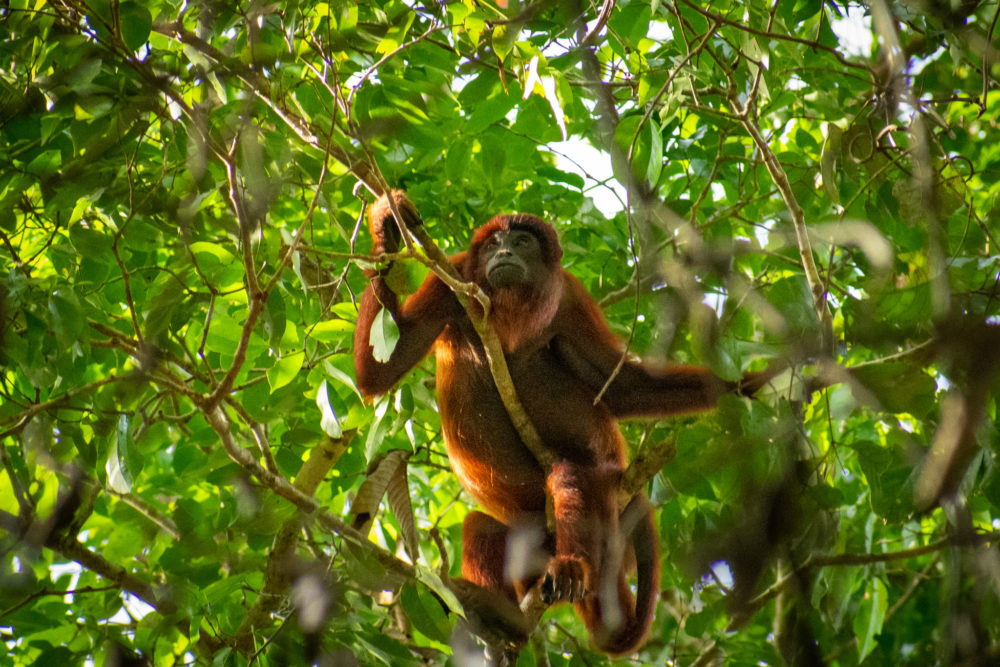
Again I have a full guide on why you should visit Puerto Maldonado & what to do once you’re there.

From the Amazonas Region, you’ll want to return to Cusco the same route you came in. Then decide if you want to visit Ayacucho or head straight to Lima.
Add In: Ayacucho
In the dry season (May-October) the Millpu turquoise pools draw visitors to this remote region of Peru. There’s no point in visiting during the wet season, however, as the pools become unreachable due to landslides and mud.
This is one of the lesser-traveled regions of Peru and on our next trip, we plan to pay it a visit.

Ayacucho serves as the halfway point between Cusco and Lima which means it’s a good stop between the two. But you can also opt for a flight if you are short on time.
Now just a quick stop in Lima. You’ve already been here. But this is the best place to get an overnight bus (around 80 soles) to Huaraz- The trekking capital of Peru.
Huaraz (2 Weeks for Trekking)
If I was going to hole up in one town in Peru for an extended period of time, it would be this one. It gives a whole new meaning to being surrounded by mountains. For travelers, who have the time and stamina…some of the best trekking in the world is done right here. From Huascaran National Park to the electric blue glacial lakes- Huaraz is a true nature lovers paradise.
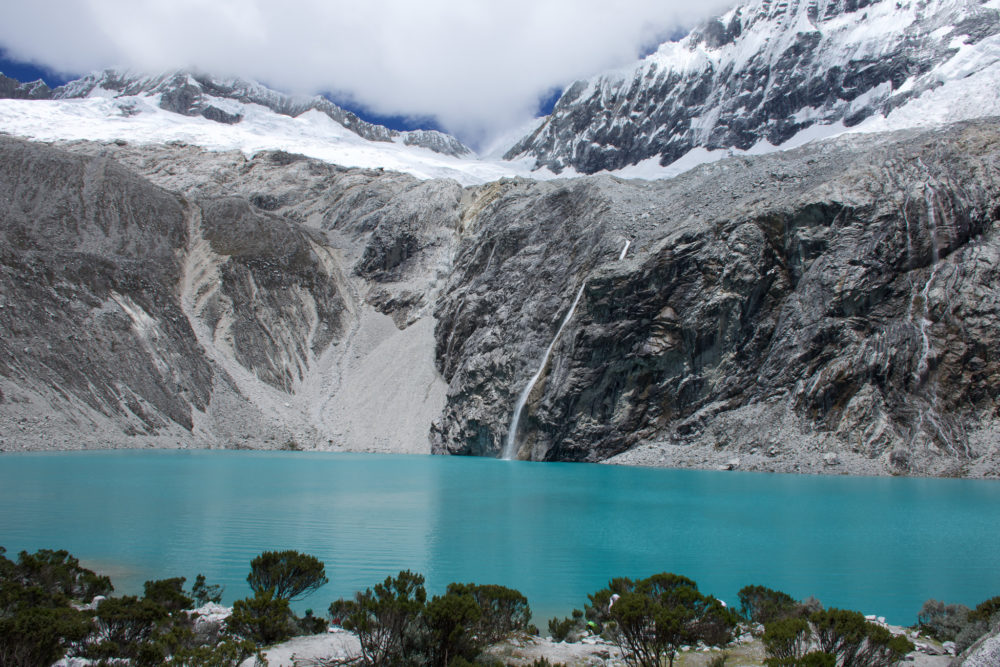
Where to Sleep in Huaraz
One of my favorite hostels in Peru was Lhotse Hostel. Not only are the rooms extraordinarily comfortable but they have an above-average breakfast served on their 6th-floor rooftop patio overlooking the entire city & all the snow-capped mountains.
Where to Eat in Huaraz
- La Comedia. The best pizza we had in South America. Top-notch but a little on the pricy-side.
- Monsters Burger. Ranging from 4-16 soles per burger (& some of them are truly monsters) this is THE local dinner spot. Big fan of the Italian (olives, cheese, pepperoni).
- Trivio. Again a little pricey but phenomenal organic food with huge portions. You could easily share an entree.
- Paulino’s Indian Cuisine. 15 Soles for the lunch deal of the day. Again, good sized portions.
- Peruvian Spot Across from Trivio. The best lunch deal in town. A starter, meal, pitcher of limonada, and a dessert for 12 soles. come hungry.
- Street Food. Huaraz has lots of street food at night. I loved the stuffed churros for 2 soles.
What to Do in Huaraz
Trek. That’s truly the only answer. There are multi-day excursions and plenty of day trips both easy and difficult. Pick your favorites from my blog post on all the best hikes in Peru.
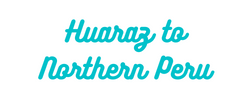
This is where our exploration of Peru ended. We chose to take the bus back to Lima for our flight out to Colombia. But if you have the time I highly recommend adding these areas in the north (below). All are accessible vis Cruz Del Sur bus.
Add In: Mancora + Piura
Major beach vibes here. We haven’t been so I can’t give you all the insider tips but when we make it back I will be sure to update this blog post with all the best beach shacks and surf spots to add to your list.
Add In: Chachapoyas
Another gem of the North (presumably, I haven’t yet been) is this lesser-visited jungle area. Mostly for some epic hiking to Gocta Falls. And Yumbilla Falls. This region is unlike anywhere else in Peru and if you have the time to add it to your itinerary I highly recommend it.
Have Less Time for Your Peru Itinerary?
Not a problem. I would recommend avoiding any of the add-ins and then picking & choosing your treks carefully. For example, the treks I would prioritize for the average traveler are: (Cusco) The Inca Trail, Rainbow Mountain, Huchuy Qosqo– (Huaraz) Laguna 69, Santa Cruz, Laguna Paron, and Laguna Churup & skip the Arequipa hikes. Only doing these hikes will cut about 12 days off your Peru itinerary.
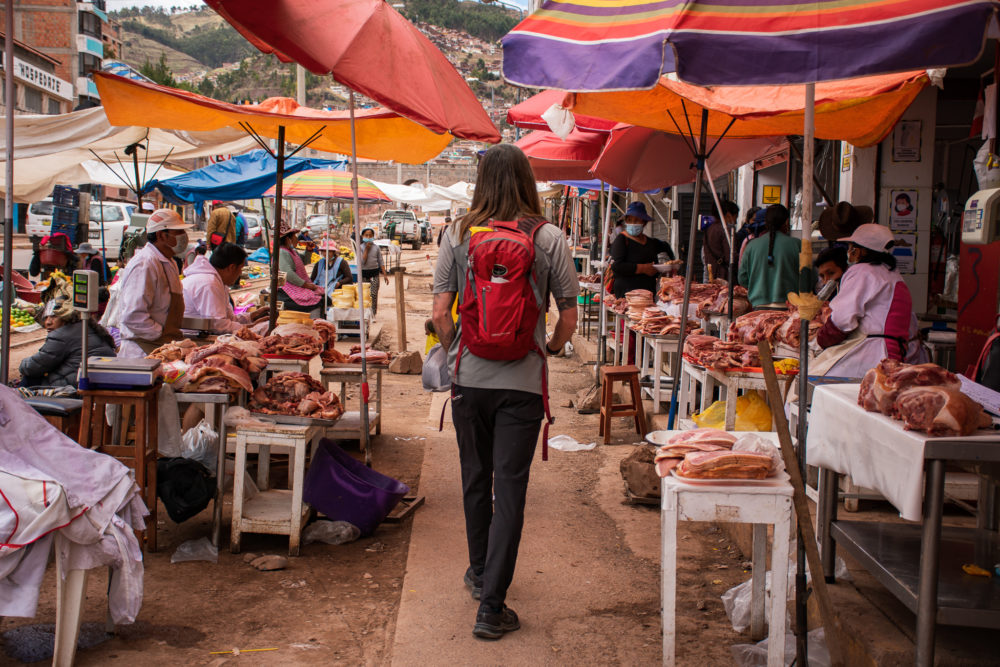
If you’re REALLY short on travel time I would choose between Huaraz and Cusco. This typically means you’ll end up in Cusco just because of convenience.
Our Ultimate Peru Itinerary Budget Breakdown
So…all said and done, how much did we spend for 2 people over 6 weeks with this Peru itinerary?
$2,726.24 or $63.40 per day.
Here’s a breakdown of exactly where the money went.
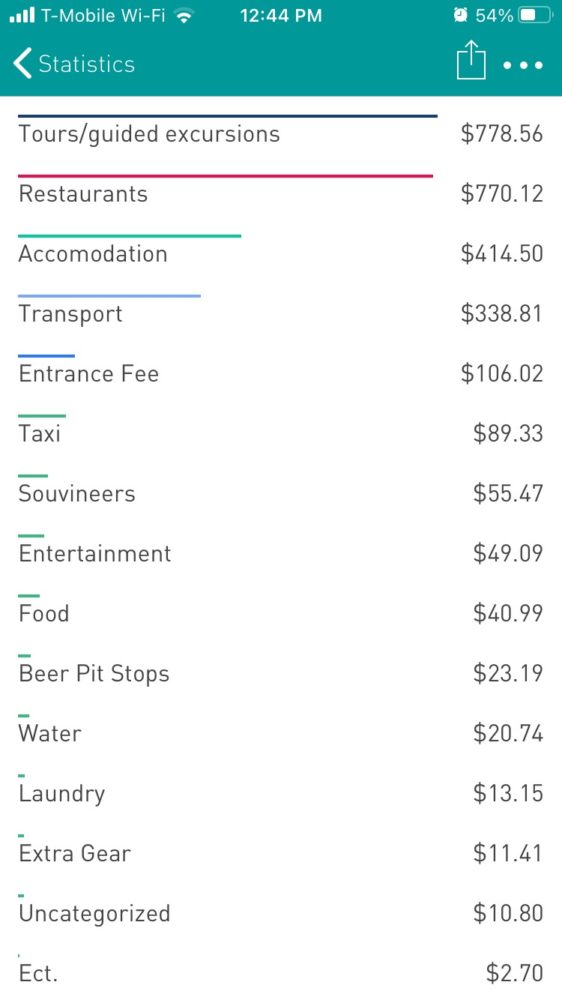
Total Spent Per Category 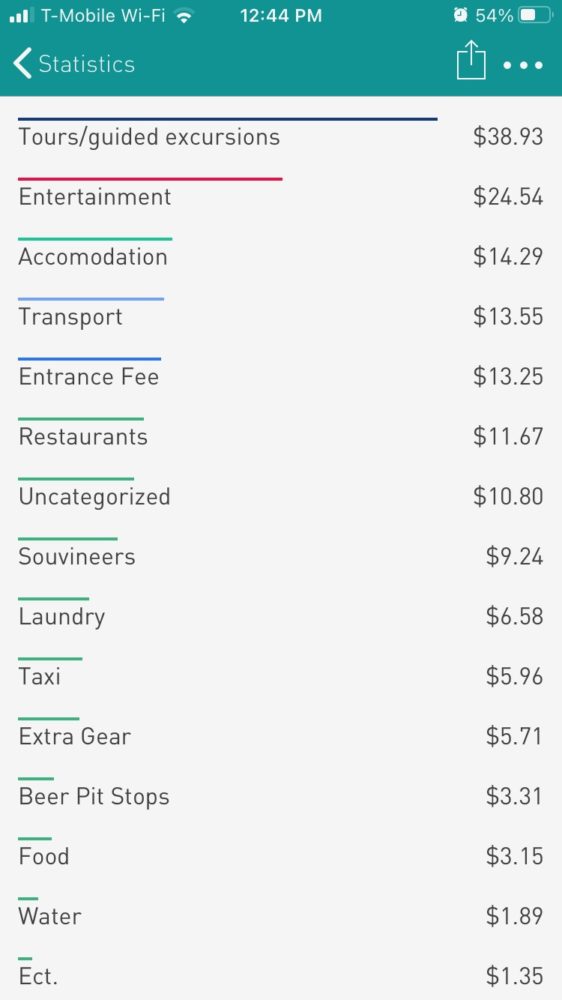
Daily Average of Each Category
As far as budget travel goes, Peru is definitely not the cheapest destination. There are too many hikes you must do guided and too many excursions you can’t miss out on. We spent significantly less per day all over Asia (even in Singapore!) but the action-packed Peru itinerary above was more than worth it.
Feel free to share some of your Peru budget-saving travel tips in the comments!
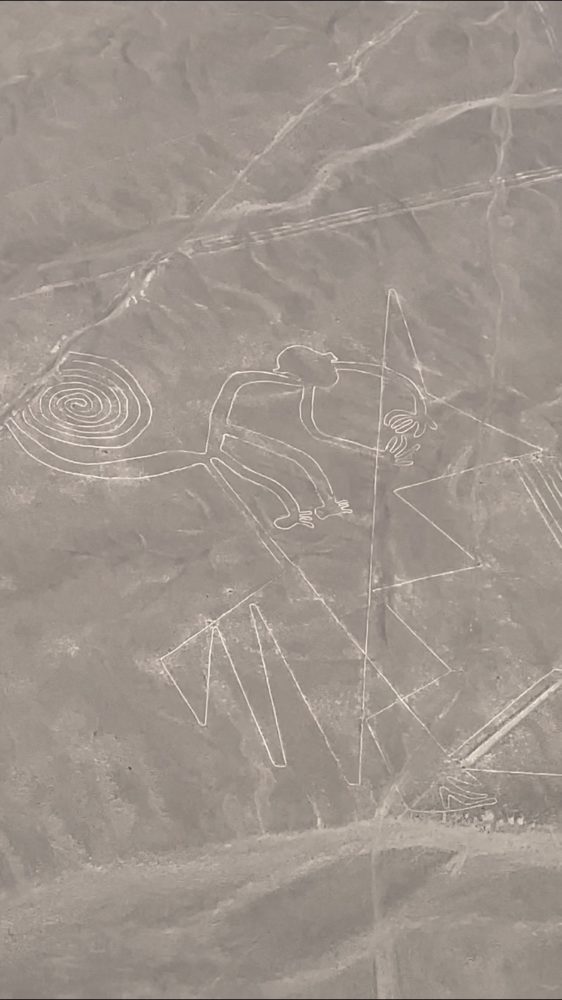
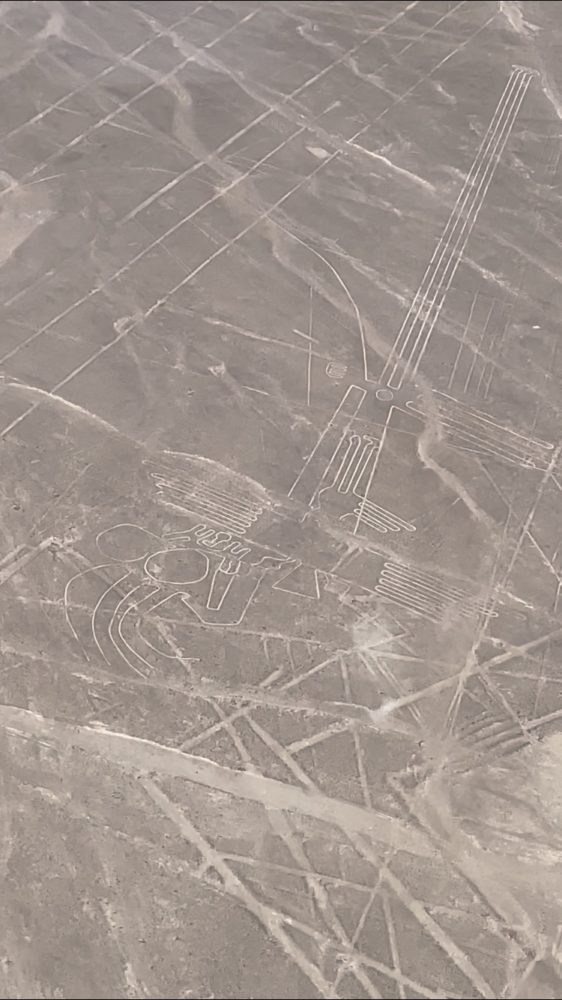
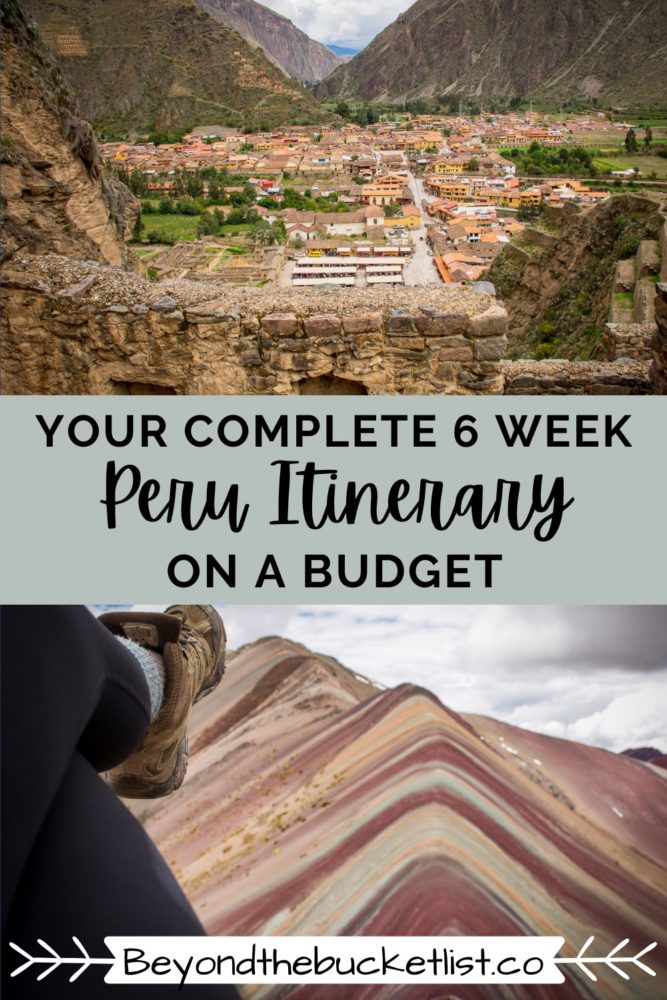
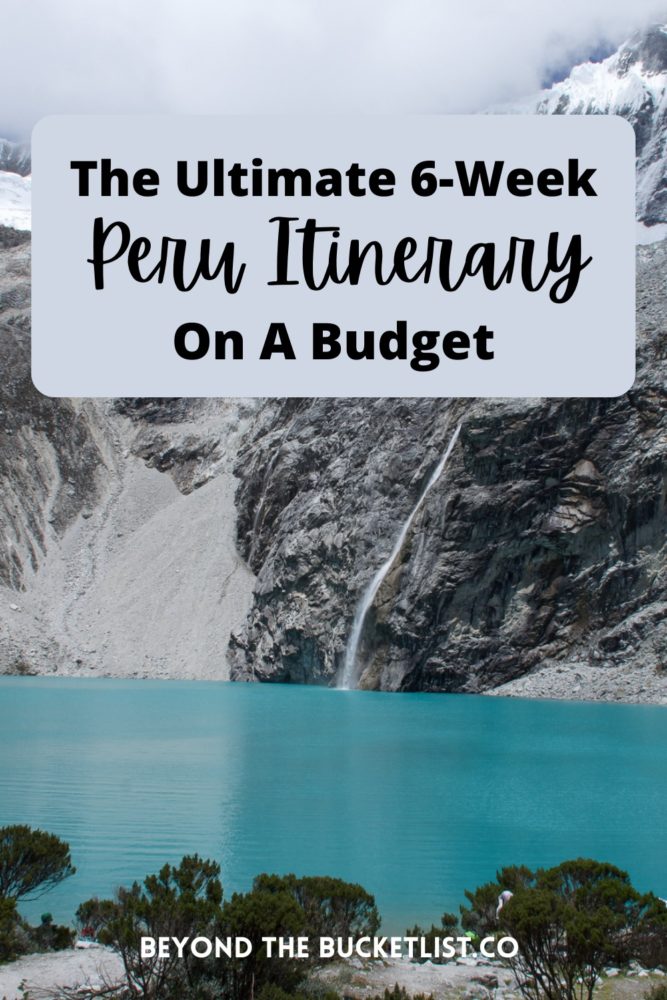
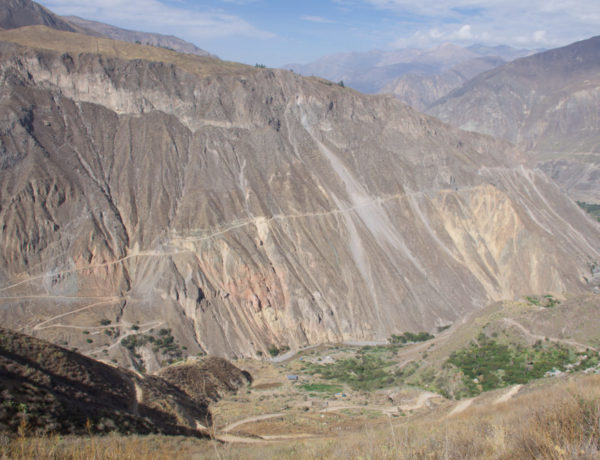
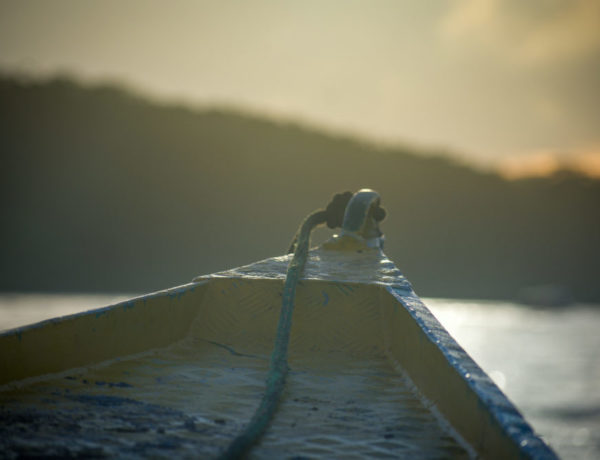
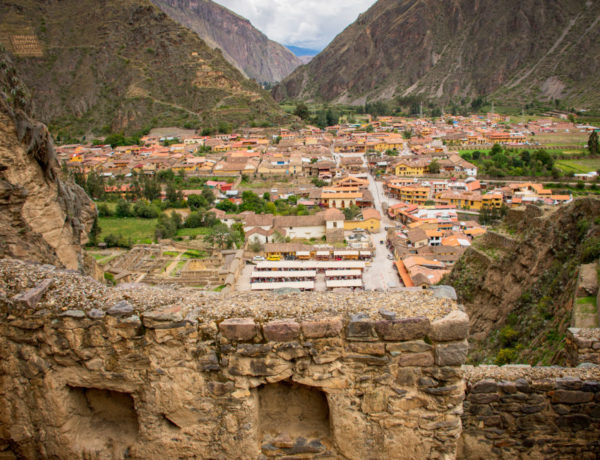


No Comments